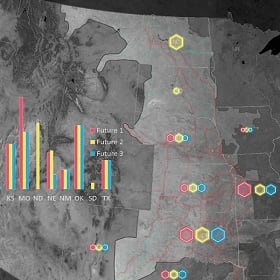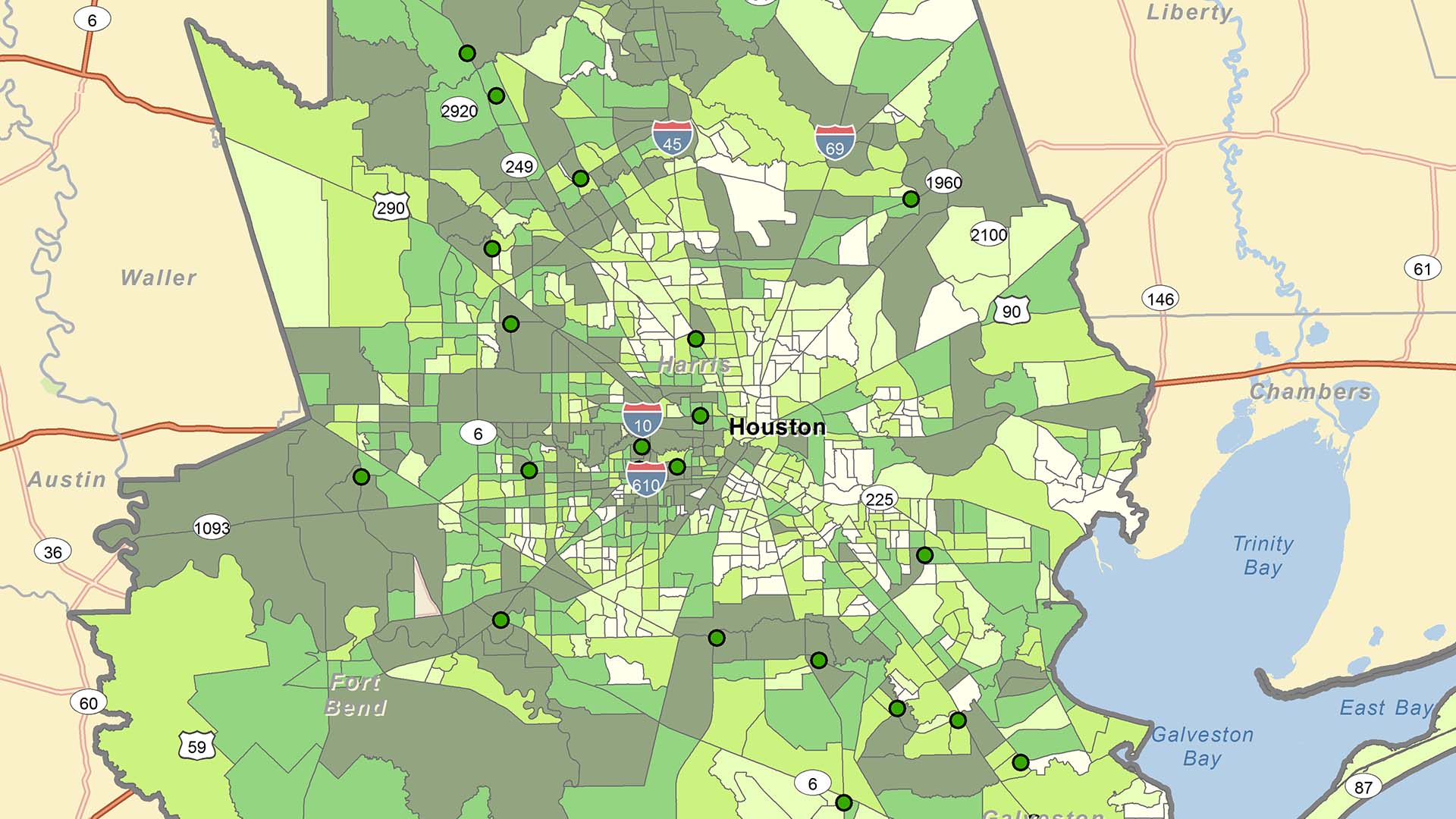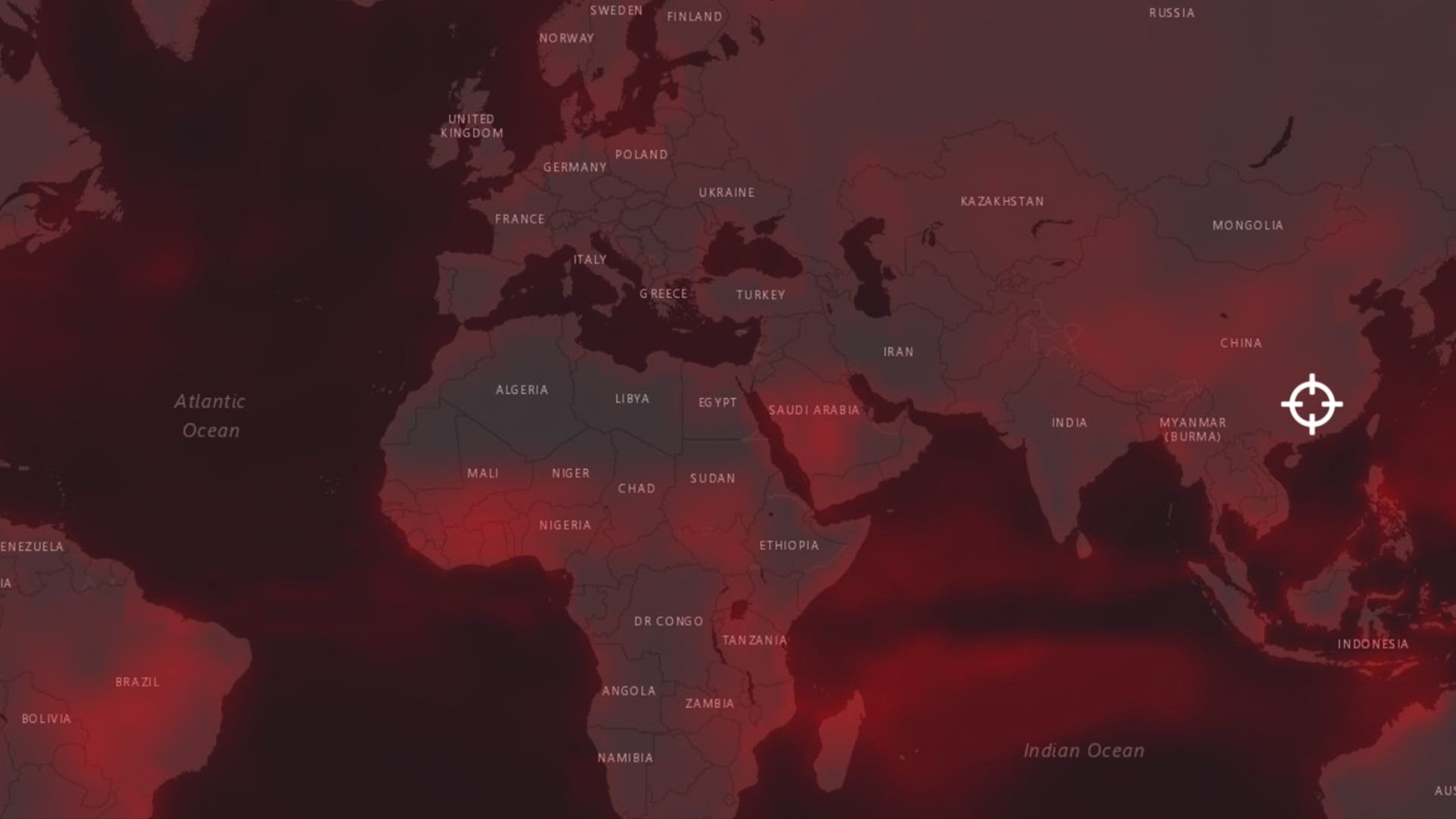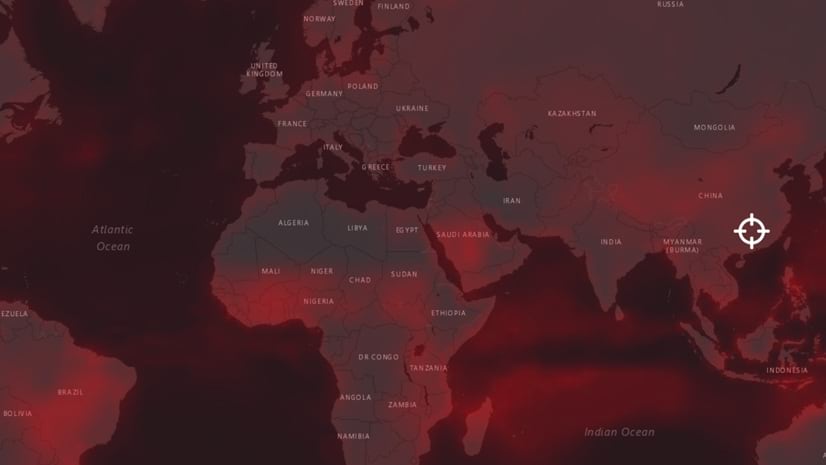This past August, CEOs of major US companies including Amazon, Walmart, General Motors, Apple, and JP Morgan Chase released a statement heralding a new vision of a corporation’s duty to society.
Issued by the Business Roundtable, an influential consortium of more than 180 American industry leaders, the statement asserted that corporations must pursue growth in a socially responsible way to benefit all stakeholders—not just to enrich shareholders. This model of “stakeholder capitalism” has since gained steam, and emerged as the dominant theme of the World Economic Forum’s January 2020 conclave in Davos, Switzerland.
Since the 1970s, the ideas of free-market economists like Milton Friedman have largely held sway in the corporate world, theorizing that a business’s sole obligation is to make a profit; Friedman once called the notion of social responsibility “a fundamentally subversive doctrine.”
Subversive perhaps, but not without precedent. In fact, the shareholder-first mind-set was a departure from deep-rooted tradition. Hundreds of years ago in Japan’s Edo and Meiji eras, merchants championed the concept of sanpo yoshi, or “three-way satisfaction.” Successful merchants understood that to build a lifelong career, they had to ensure that every transaction benefited the buyer, seller, and the local community. It’s an ancient concept that’s being rediscovered by modern executives.
Today, business leaders are confronted by a public deeply concerned about fraying communities, rising inequality, safe and sustainable industry practices, and climate crises. Statements like the one from the Business Roundtable show that leaders increasingly agree with consumers—especially young, vocal ones—that companies must help reverse these trends.
Business leaders regularly review issues of corporate responsibility: where they engage underserved customers, where the company’s carbon footprint is rising or falling, where employees’ income levels fail to match the local cost of living or reveal discrepancies like a gender pay gap.
To make careful and consistent decisions on these issues, executives need a way to monitor, manage, and report on company activities. One way to do this is to focus on the element that grounds nearly every social responsibility issue: its geographic dimension—the where of what happens. For a holistic view of where a business’s work supports its broader social duties—and where improvements are needed—companies are moving toward the idea of a corporate responsibility map.
In smart maps, business leaders have a powerful tool to plan, track, and manage efforts toward responsible practices in every geography they touch. Many have already harnessed location intelligence generated by smart maps to grow their businesses profitably. Now, they’re finding this geographic guidance indispensable in the era of stakeholder value.

A CSR map can include multiple layers of information—an executive might "turn off" a view of the company's carbon footprint and "turn on" a view of its sustainable sourcing partners.
The New Corporate Social Responsibility
Decisions related to sustainability or social equity are not abstract, but coded into the physical operations of business. A manufacturer that adjusts its supply chain to work exclusively with partners who eschew deforestation, or a bank that actively expands into neighborhoods formerly ignored by the financial industry, can have a more profound and lasting effect than a one-off charitable donation.
Everywhere a business operates, from a downtown neighborhood to an entire continent, is a place to practice social responsibility. Whether that involves better serving marginalized communities, reducing greenhouse gas emissions, supporting fair trade, or upskilling workers, location data plays a key role in determining where and how a company can do the most good.
That’s why innovative banks, brand-conscious retailers, forward-thinking utilities, tech-savvy hospitals, and others are relying on smart maps and dashboards generated by a geographic information system, or GIS, to help them visualize, monitor, and report on CSR-related efforts.
Customers and Employees Turn Tide of Public Sentiment
The practice goes by many names: corporate social responsibility; environment, social, and corporate governance; stakeholder capitalism; sustainable prosperity. All advance a philosophy that marries the long-term health of a company with the people and places it serves. The driving forces are both economic and cultural, and originate inside and outside a company.
Consulting firm McKinsey found that as much as 70 percent of an organization’s earnings could be impacted by risk-related sustainability issues. Yet the most powerful factor may ultimately come from the rising Millennials and Gen Zers, who wield influence both as customers and employees.
According to one study, almost 9 out of 10 Millennials would consider taking a pay cut to work somewhere that aligns with their values and mission. Walkouts, protests, and activist efforts—like the 1,100 Google employees who demanded the tech giant eliminate carbon emissions—signal that socially conscious employees are willing to take risks for their values. Companies seeking to recruit and retain the best talent need to position themselves as workplaces that incorporate social responsibility into the fabric of their operations.
At the same time, customers are now choosing to support—or not support—businesses based on the ethical or sustainable nature of their practices. A 2018 Edelman survey found that nearly 60 percent of American consumers would boycott a brand based on its stance about societal issues—earning them the sobriquet “belief-driven buyers.” Companies with poor visibility into their own supply chains or a bad record on pollution, for instance, can find themselves shamed on social media and blacklisted by socially conscious buyers.
BlackRock, the world’s largest asset manager, announced in January 2020 that it would exit investments in companies that gain more than a quarter of their revenue from coal. CEO Larry Fink, writing to business leaders worldwide, said BlackRock will be inclined to vote against management and board members who do not substantially disclose their companies’ efforts toward sustainability and purpose-driven business.
These pressures and others are pushing businesses to create systems with which executives can review and manage the social and ecological impact of their operations. Increasingly, smart maps are helping them plan, visualize, organize, monitor, and report on those impacts.
Here, we’ll detail a few of the major areas where executives are using location technology to steer their organizations toward sustainable prosperity.
Responsible Action: Finding Profit and Purpose in a Double Bottom Line
Businesses taking a location-aware approach to corporate social responsibility can effectively pursue what some call a double bottom line: achieving profitability while also engineering a net positive social effect. (Some refer to this as a triple bottom line to denote commercial, social, and environmental benefits.)
Many banks, for example, have overlooked a potential double bottom line for decades. The practice of redlining, enacted in the 1930s by government surveyors, systemically denied mortgages and lending opportunities to nonwhite communities and immigrants, thereby creating segregation based on race, religion, and income.
The resulting banking deserts—areas that lack basic financial services—persist today, especially in high-poverty neighborhoods that are predominantly African-American or Latinx. Stepping into this banking vacuum have been predatory fringe financial services providers like payday lenders, check cashers, and loan sharks that get people onto high-cost credit treadmills that are difficult to escape.
Fintech companies and innovative modern banks are beginning to see these banking deserts as places where businesses can flourish by providing an essential service to a community—promoting social equity and the bottom line.
That was the thinking behind Apoyo Financiero, a microfinance company started in California’s Bay Area in 2007. Antonino Morales, a first-generation American, is the bank’s president and CEO. After pursuing a career in financial services and working for a number of big banks, Morales noticed that many major financial institutions were ignoring the kinds of neighborhoods his parents had moved to after leaving Mexico.
“These folks were being classified as subprime or poor borrowers, when the reality was, they just didn’t have credit experience,” he says.
Good for Business, Good for the Community
Morales joined Apoyo in 2017 with the goal of helping such customers create credit lines that would ensure their future. The company offers small, fixed-term loans with fixed interest rates, employing a combination of brick-and-mortar locations (currently 28 branches throughout California) and online banking. Smart maps made with GIS have become a cornerstone of how the business grows.
By analyzing data on a smart map, Morales and his team can identify places that are neglected or in need of ethical financial services. Once Apoyo opens a branch in a selected location, executives can use the branch profile to find similar neighborhoods in other markets. Anonymized data on income levels, countries of origin, and how long a population has been in the US serve as guideposts—even concentrations of payday lenders can be a clue for where to open the next branch.
Apoyo’s presence in underserved areas creates positive ripples that help counteract the historic or economic forces that have held some communities back. “It’s the old story,” Morales says. “If you want to feed people, you don’t give them fish, you give them a fishing pole. They’ll just create entrepreneurial opportunities in this community.”
Other financial institutions are making headway in this territory as well. JPMorgan Chase—one of the companies that signed the Business Roundtable statement—is investing $200 million to revitalize Detroit’s economy by 2022. Through a mix of loans and grants, training programs, workforce development, and other investments including in neighborhood mapping, the firm aims to bring more opportunity to the city, turning Detroit into an engine of economic recovery.
Responsible Action: Ethical Supply Chains and Sustainable Sourcing
Multinational businesses rely on complex networks to produce and transport goods around the world, and business leaders and the public are becoming more aware of how these systems can harm or improve the surrounding environments.
Uncomfortable with the idea of indirectly supporting sweatshops or other unethical workplaces, citizens are holding companies accountable for the factories, fields, and mines where they source supplies and products. On a global scale or in smaller regions, a smart map can be key to tracking and managing responsible working conditions and fair wages in a comprehensive manner.
Resource sustainability is another priority, especially among companies that work with natural resources, from food and drink purveyors to energy providers and car manufacturers. When Nespresso executives read research suggesting that Arabica coffee could be wiped out in some countries by 2050, they accelerated a program to promote sustainable growing practices among the thousands of farmers the company works with. Nespresso uses GIS technology to keep track of program compliance and to power a sustainability dashboard that shows customers and stakeholders the company’s progress.
“When we need to explain something to [customers], a map is much more relevant than a report,” Yann De Pietro, Nespresso’s operations and sustainability technology manager, told WhereNext. The coffee maker relies on GIS maps that showcase its efforts to support and empower farms. “We can always say we work with 100,000 farmers in the world, but if people don’t see it, they won’t believe it.”

Companies working from a long-term strategic view are taking a proactive approach to employing sustainable practices, and many are using location data to execute their strategies.
Charting Sustainability with Location Intelligence
According to a McKinsey report, 60 percent of organizations are more engaged in sustainability than they were two years ago—a number that rises to around 80 percent in industries focused on consumer packaged goods and infrastructure. The same report found that nearly half of these companies are employing big data and advanced analytics like location intelligence to carry these efforts out.
In nearly every field, rising leaders are creating change with the help of location data and technology.
Bunge Loders Croklaan (BLC), a global refiner of palm oil, uses a combination of location intelligence and satellite imagery to track its supply chain, ensuring that all partners are sourcing in a sustainable and ethical way. As major companies like Procter & Gamble and Cargill have promised not to source products connected to jungle deforestation, there’s a growing need for a location-aware supply chain that’s sensitive to environmental factors.
Last year, retailer H&M made fast fashion news by launching an ambitious garment transparency program. A bar code on each clothing item allows shoppers to track information including the name, location, and labor force of the factory where it was made. These efforts toward transparency not only ensure more ethical supply chains, but they also attract conscientious buyers—especially online.
Responsible Action: Tracking Carbon Footprints and Climate Risk
With a devastating pronouncement in late 2018, a United Nations panel of scientists declared that the world had only a dozen years to stem the looming impacts of climate change. The revelation inspired some to action and underscored the importance of understanding risks facing companies, customers, and communities.
The Paris climate agreement, BlackRock’s disavowal of polluting companies, and thousands of declarations in corporate sustainability reports—these are the actions of a business community waking up to its responsibilities in the era of climate change.
A supply chain executive or sustainability manager can use GIS to follow their company’s carbon footprint over time. Through a combination of analysis and visualization, those decision-makers can determine where company activities are contributing most to the rise of greenhouse gases—and where mitigation efforts are gaining ground.
In 2015, Walmart took a close look at its greenhouse gas emissions and found that its carbon footprint was tied to everything from its trucking fleet to its big-box stores to the manufacturing of the hundreds of products it sells. Thanks to a company-wide mobilization toward reducing that footprint, the retail giant is now on course to reduce one billion metric tons of carbon from its global supply chains by 2030.
An Executive-Level View of Impact
Because carbon emissions are so closely tied to site selection, transportation, and the movement of products and resources along supply chains, a strong data system is essential to accurate tracking. Here again, smart maps provide the executive-level view needed to monitor a company’s impact on the places it operates. Just as important, smart maps are a key method of communication to customers and communities—a progress report in living color.
Executives recognize that risk from a changing planet could imperil their businesses and the places they serve. Leading-edge thinkers are beginning to use location analysis to map the risk of rising tides, severe wind events, and other accelerating climate threats. Banks, telecom companies building 5G networks, even consumer packaged goods companies are seeking location intelligence to anticipate where operations may be at risk and how to make responsible long-term capital investments for the good of the company and the communities they represent.
Some see opportunities to pursue the double bottom line while addressing climate change. Austin Energy, a public utility company in Austin, Texas, plans to target underserved areas as it promotes renewable energy. Lindsey McDougall, an EV program manager at Austin Energy, predicts location intelligence will help them to “identify underserved populations (both low-to-moderate income communities and areas without electric vehicle charging station infrastructure) and focus and customize programs and outreach to those communities.”

Location intelligence, in addition to being a powerful analytic tool, also serves as a compelling storytelling platform to communicate with customers, employees, and the public about a company's CSR efforts.
Responsible Action: Upskilling Workers and Communities
For some companies, the path to corporate social responsibility runs closer to home, even right under their own roof. Looking out for their employees’ futures and supporting local communities that are falling behind the pace of economic or digital transformation can have an immediate impact.
Factors such as wages have to be weighed against other variables like cost of living or real estate values, requiring a geographic perspective that includes location-specific data. A compensation map that takes gender into account could show business leaders where pay differentials are most serious by country, region, or office.
This kind of location intelligence delivers a more accurate view of a company’s impact in each location, and can prove essential to executive decision-making. It can also predict how trends may play out in the future. In the national push for higher minimum wages, for instance, hot spots of labor activity have developed in surprising places, including states that have traditionally pushed back against such efforts.
Meanwhile, trends like automation, which could eliminate millions of jobs in the coming decades, are top-of-mind for many workers. In a Bright Horizons survey of 30,000 workers, 9 out of 10 said they believe automation will impact their industry and transform jobs. This, in turn, is driving increasing interest in upskilling and education, which more companies are moving to help provide.
Amazon announced last year that it will spend $700 million to retrain 100,000 of its employees, while FedEx Express has partnered with the University of Memphis to offer tuition-free college and the equivalent of a high school diploma. Location intelligence can help target the areas and populations that would benefit most from further academic or professional education.
A Responsible View of Success
In many ways, the conception of corporate social responsibility gaining momentum today is a return to a mid-century vision of the corporation’s role in society, articulated by theorists like Peter Drucker. Regarded as the father of modern management, Drucker saw the growing power and influence of big business as an opportunity for corporations to be pillars of civilization—institutions that guarantee dignity to people while offering economic prosperity.
Even a prescient thinker like Drucker may have been unable to imagine the breadth of data available to business leaders today—and the tools that give it context. Through GIS technology, business leaders are finding the location intelligence—and the intuitive maps and dashboards—to visualize the many facets of corporate social responsibility.
Location intelligence has already driven economic advantage for companies worldwide. Now that same data is revealing the ways business can benefit the world, whether by reducing carbon footprint or better serving marginalized communities.
Because data helps business leaders see how interconnected the world is, their definition of success is becoming more holistic: prosperity that extends beyond office walls and 10-Ks to flourishing communities and thriving ecosystems.
Editor’s note: Corporate social responsibility and stakeholder capitalism have many dimensions. Stay tuned to WhereNext as we explore how pioneering companies are using data, analytics, and location intelligence to succeed in this new era of equity and sustainability.












